A brick wall, under the influence of moisture and temperature changes, is gradually destroyed, especially the facade. You can protect it with siding, plastering. Reliable and beautiful protection will be painting a brick wall. The work does not require special training and sophisticated equipment. You can do it yourself in several stages:
- wall cleaning;
- sealing cracks;
- primer;
- painting.
Work can only be carried out in warm time year and in sunny weather, especially on the street. The brick must be dry and the masonry must shrink. The wall should not be painted earlier than one year after completion of construction.
First you need to clean the wall of dust, dirt, old paint and plaster residues. You can use a metal brush. Particular attention should be paid to places where efflorescence appeared - a white coating in the form of salt or frost. This is a signal about the accumulation of dew on the surface of the brick from the temperature difference outside and inside, or the appearance of moisture and lime crystallization. Such stains are carefully cleaned and treated with special acidic compounds.
Further wet cleaning, finally removing the abrasive and chemical residues. Ordinary sponges and products that are used for cleaning will do. Wash the bricks and joints with warm water and let dry well.

Check for cracks, chips, voids. All defects are sealed with cement mortar or putty based on acrylic and silicon. Small cracks can be covered with latex paint, which is designed for brick walls. Remove protruding seams.
The primer is selected special and applied in a thick layer. This is necessary for its deep penetration into the wall material. Additionally, such impregnation prevents the appearance of fungus and saves paint. Brick walls can be painted without a primer. Then the consumption of material will be much greater and you can soon observe the formation of small bubbles. The coating will quickly begin to deteriorate.
In the bath and on the street, brickwork can be primed twice in different directions, creating a reliable protection for moisture-sensitive material. After complete drying, the final processing of the walls is possible.
How and how to paint a brick wall
The method of applying the coating to the wall depends on the condition of the masonry and the desired effect. Paint can be applied:
- brush;
- roller;
- spray gun;
- swab.
A decorative wall on the street and inside the house is often done using two methods of staining. Carrying out work on creating the main background and decorating with another technique.
Facade works
Processing of brick walls and fences is carried out in order to give a decorative look and protection from destruction. Brick is hygroscopic. Has a porous structure. In winter, the water freezes and destroys fake diamond from within. In summer, the sun dries out the material, making it brittle, breaking the bond between the elements. It is necessary to carry out work to protect against corrosion and at the same time you can give the masonry a unique look.
Transparent coating of decorative masonry
Decorative masonry should not be covered with paint and hide the beauty created by the bricklayer under it. Enough protective work in the form of a coating of transparent varnish. For outdoor work, you can use:
- scuba diving;
- clinker oil;
- acrylic varnish;
- parquet wax and varnish.
Brickwork will become brighter, individual elements will stand out more clearly, and will be protected from damage. external factors. Surface preparation is the same as for painting.
Colored exterior walls
Large areas of exterior walls can be painted with pneumatic and electric spray guns. Given the roughness of the surface, the angle of the jet should be changed. After the applied paint has dried, a number of decoration works can be carried out.
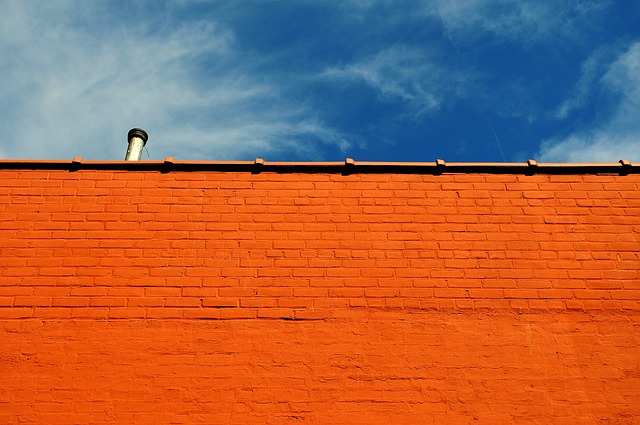
Convex seams are painted with a thin brush with a contrasting color, emphasizing the masonry pattern. With recessed joints, you can create a light coating effect with a rigid roller when protruding sections of the material are stained. In this case, the paint for the layers is taken in the same color, but different shades. The stone takes on the appearance of an old, weathered one.
You can create Bovar masonry with a brush. After carrying out the main work, paint over individual bricks with black paint, lightly brushing the pile over the surface. You can create a specific pattern according to the scheme or do it randomly. Half the smaller number of stones also process a light gray or sandy tone.
For painting facades in stores there are special materials. Can be used for outdoor work and elastomeric paint. It lays down in a thick layer and perfectly protects the brick and concrete joints, penetrates deep into the cracks, closing them. The disadvantage is that it is difficult to apply and high cost.
Decorative painting of interior walls
In the interior, areas with brutal masonry are increasingly being created. To do this, it is enough to prepare the wall, having cleaned it of everything foreign, wash it and dry it well. After that, a transparent matte material is applied - varnishes and oils. The number of layers can be done 2 - 3, but the coating should be updated as necessary.
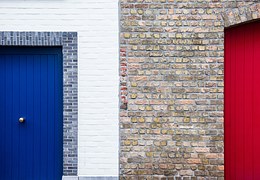
In the bath, bathroom, laundry room, kitchen and other wet areas, immediately cover the wall in 4 layers. After each application of varnish, you should make an exposure, allow the previous one to dry completely. It is better to use a brush and very carefully paint over all the irregularities, applying the coating with perpendicular strokes, first vertically, then horizontally.
Monochromatic painting
For kitchens and bathrooms, the wall covering must be particularly thick and durable. Moisture must not penetrate the porous brick. Often, for this, the wall is covered with a thin layer of putty, then primed and painted. The textured glossy surface gives the interior airiness and looks stylish in rooms with thematic design.
Decorating masonry in the interior
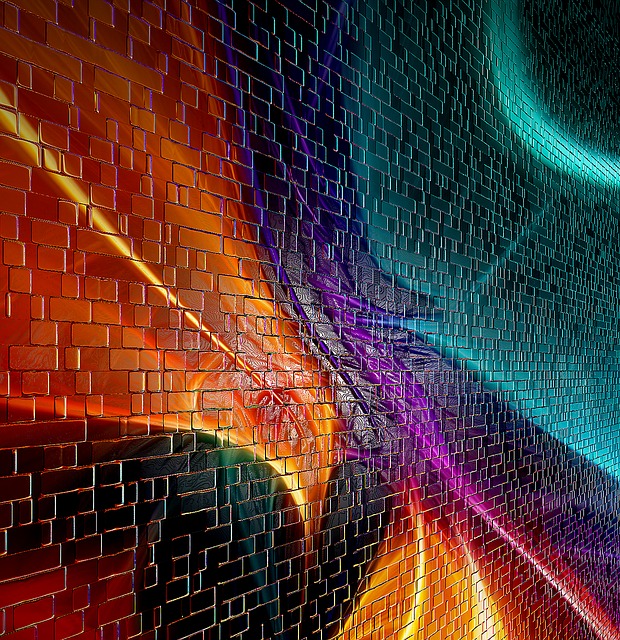
An easy way to make the living room mysterious is to paint the wall like Bovarian masonry. The procedure is the same as when the facade work was carried out. Only the background can be done with a brush, carefully rubbing the paint in different directions. After drying, create shades.
You can age the stone with a sponge or gauze swab. On the dried background paint, apply a light coating with a different color, creating friability, transparency. This method can also be used when working with a stencil, applying silver and golden highlights on a glossy surface.
There are many methods for creating a decorative colored brick wall using paint. Choose the one that suits you and create a unique image of your home.
Finishing, restoration, or just decorating the facade often become a real headache for owners of private houses. If your house is built of brick, then probably the main option you are considering is painting, but what kind of paint is best for such work, and how to paint brick wall outside?
This question is very important, especially considering all the variety of paints and varnishes in modern hardware stores, and this is what we will talk about in this article.

It is with the answer to this question that you must begin your choice. What qualities should paint have, and why do some facades retain an attractive appearance years and others lose it after just one season?
Let's look at the main selection criteria:
- Moisture resistance. The first and most important factor. If your paint is permeable to moisture, it will wear out pretty quickly. Not every material has moisture-repellent functions, so you need to look for information about this on the packaging.

- Vapor permeability. At first glance, it may seem that in relation to the first paragraph, this indicator is mutually exclusive, but it is not. Modern paints have high vapor permeability, that is, they release moisture to the outside, but at the same time do not let it pass under the surface.
- UV resistance. The facade is constantly exposed to the action of sunlight, and many paints simply burn out, so it is so important to choose the one that will retain its appearance without losing color over many summer periods.
- Durability. No matter how trite it may sound, but the facade is the face of the house, and its restoration is a laborious and expensive task. It is very important that the paint lasts more than 10 years, and not all manufacturers give such a guarantee.

- Wear resistance. Sooner or later, any facade gets dirty, and sometimes it has to be washed not just with running water, but also with hard brushes or chemical detergents. The paint must be resistant to such procedures, and not wear off when in contact with cleaning tools.
- Ease of application. The factor is especially important for those who decide to make repairs with their own hands. The instructions for using some paints do not provide for their application with a brush or roller (see), and expensive equipment may be needed, which, to put it mildly, is impractical to buy for a one-time job.

Advice! Give preference only to trusted brands that have a lot of positive reviews. It’s not a fact that a lesser-known manufacturer will be worse, but the risk in this case is unjustified, and the result of savings may be the need for repainting in a couple of years.
So, we figured out the main criteria, which means we can proceed directly to a detailed consideration of the materials. Below we will talk about two types of facade paints, and try to figure out which one is better and more reliable.
Latex facade paint

It is produced on the basis of natural rubber resins, and today it can be called one of the most popular options for painting the facade. We note right away that this pleasure is not cheap, but the service life of such paint, according to manufacturers, is at least 25 years under the most intense load.

Another feature of latex paint that can be considered an advantage is its environmental friendliness. The paint does not contain chemical components, so even during operation it does not emit unpleasant odors.
Interesting! Often, latex paint is also used for work in an apartment, since it has no smell, but it is important to remember that facade paint is different from that used for interior work, and its price is much higher.
So, let's look at the key features of this type of paint.
Characteristics and features
![]()
This:
- High vapor permeability. Despite the fact that latex is a material that resembles rubber in properties, the paint from it perfectly releases steam from under the coating, so you don’t have to worry about the appearance of fungus or mold.
- Moisture resistance. Another key meaning that this paint actually has high level. Latex prevents the penetration of moisture, as it creates a thin film. One of the photos in this article shows how water droplets behave on a painted surface.

- Latex paint, by definition, cannot be glossy.. In any case, the coating will turn out matte. This factor cannot be attributed to disadvantages or advantages, but you need to know about it when choosing this material for your home.
- Apply latex paint best with roller or brush, because due to the water base, smudges may form on the surface when sprayed.

- Such paint itself is the most resistant to ultraviolet radiation., but only on condition that you do not use tinting paste, which in turn may lose its color after some time.
And finally, one more rule that should not be forgotten: do not mix latex paint with materials on a different base. Thanks to water based, folding will not occur, but adhesion will be completely broken, and the entire mixture will have to be thrown away.
Oil based paint
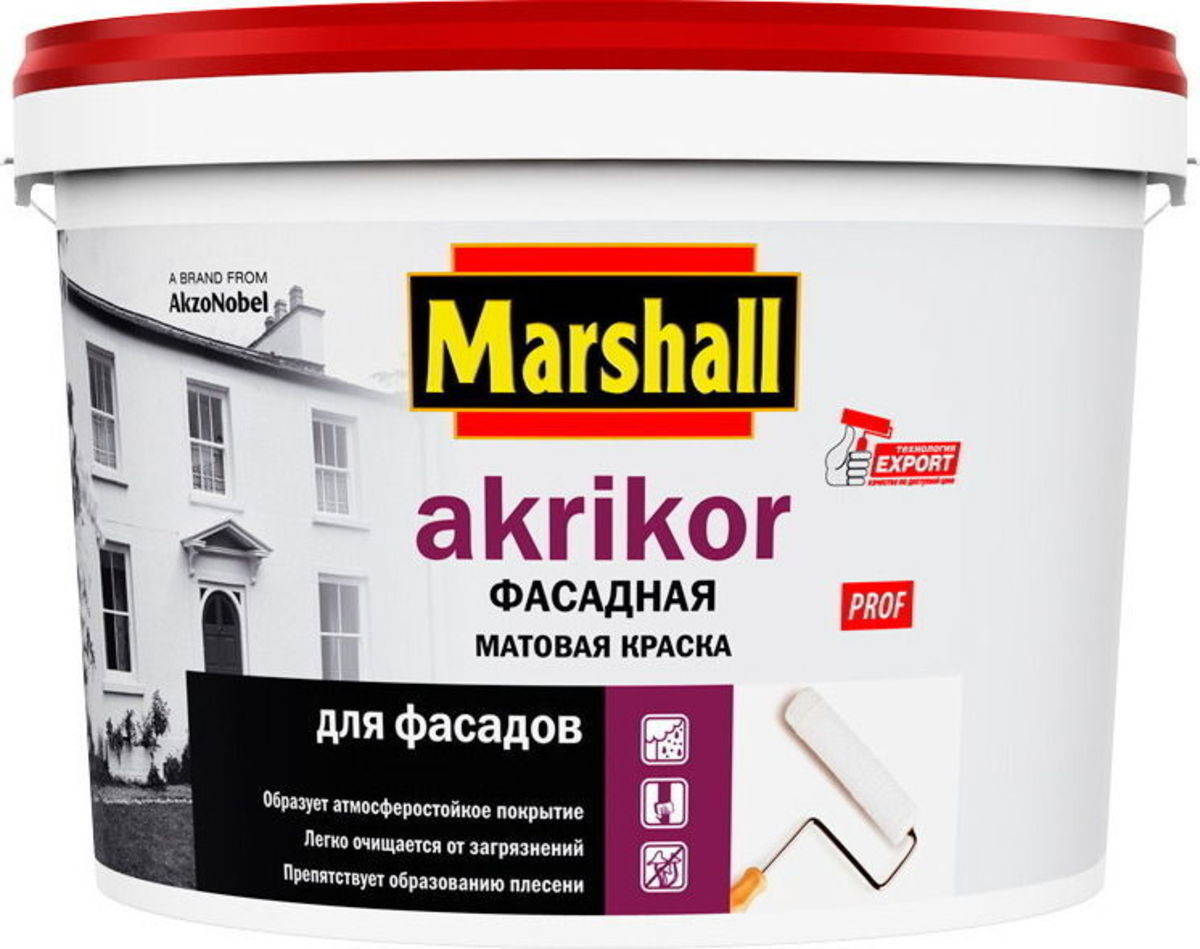
Even 20 years ago, this was the only answer to the question of how to paint a brick wall. was the most common, and facade works she had no competition at all.
They still use it today, although not so intensively, and the point here is that it specifications turned out to be simply irrelevant for our time, and other brands of paints are far ahead of it. As for the cost, you can’t call it low either, and besides, oil paint is a product of the chemical industry, and in our age, when many people are so striving for environmental friendliness, they simply try to refuse it, giving preference to cleaner and safer materials .

But, not everything is as bad as it might seem at first glance. Oil paint also has a lot of advantages, for example, its ability to retain color long time. Of course, this is true only for eminent manufacturers who value their reputation.
PF does not fade in the sun, and also perfectly retains moisture. Under such paint, the facade will be reliably protected for many years, but let's look at the features of this material in more detail.
Features of oil paint

This:
- Low vapor permeability is one of the main disadvantages of this material. PF creates a thick film on the surface, under which moisture does not penetrate, we have already talked about this above, but it does not let it out, which means that before application, the facade requires especially careful protection in the form of primer and impregnation.
- You can apply paint in any convenient way, be it a paint roller or an airbrush (see). The only difference is that in order to spray, you have to dilute the paint to a more liquid state, or select a more powerful sprayer that can lift it.

- According to the instructions, oil paint is diluted with white spirit, but if desired, it can be replaced with solvent 646, by the way, the gloss of the coating will increase in this case, and the drying time will be reduced several times.
- Drying time, an aspect that can be attributed to the shortcomings of the material, since depending on the temperature environment and general humidity, it can take up to several days. In the summer, if the paint is diluted with a solvent, this process takes only a few hours.

- Resistance to mechanical damage. High-quality oil paint creates such a strong film that it is very difficult to damage it. Of course, a hammer blow will leave its mark, but you don’t have to worry about accidental touches and blows.
Advice! Do not use gasoline to dissolve oil paint. The coating dries in this case much faster, but it has been noticed that it loses its color after a few years. In addition, adhesion to mineral surfaces is significantly impaired, which also affects the service life.
And in conclusion

Well, that's basically all that we wanted to tell you about these two materials within the framework of the article. And finally, we invite you to watch the video in this article, which shows the process of applying paint with a spray gun.
If at the time of reading, you still have not decided how to paint a brick wall, then we bring to your attention a small comparative table that will surely help you make the right choice.
As you can see, latex paint has more advantages over its competitor, so it can be considered our winner today. But do not forget about the PF, in some conditions, it is best suited, and with large amounts of work, you can also save significantly.
It is worth thinking carefully about whether this is necessary. By its very nature, brickwork is not meant to be painted. If it becomes necessary to remove paint from it (due to negligence or marriage in work or a desire to insulate the walls with a layer of plaster) or replace burnt out from old age, be prepared for the fact that it will be very difficult to do such work. This is especially true for stitched seams.
Why paint brick walls
Nevertheless, bricks have been painted almost from the beginning of its use in construction. Quite often, it is even advisable to paint a brick wall or an old brick fence. For example, when the masonry has minor, but visible damage to the naked eye, or salt crystals appear on its surface - efflorescence.
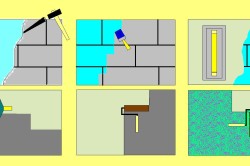
The need to paint the outer brick wall may also arise if, under the influence of time, sun and precipitation, the brick has faded, losing its original color and brightness. In this case, the painting, provided that it is matched to the tone, will return the brick to its original appearance.
Recently, the coloring of brick walls has become fashionable among designers and decorators. Such a design technique at minimal cost can give a brick house a special chic and individuality.
Whatever the reason for painting a brick wall, nevertheless, this operation must be approached very responsibly. With the wrong choice of material or careless painting, a brick house can turn into a hermetic damp box, losing the remarkable ability of a brick wall - good vapor permeability.
Back to index
Features of the choice of paint
Brickwork has a porous, rough surface, which is also heterogeneous due to cement joints. It is extremely difficult to paint such a surface with ordinary paint with high quality, therefore a special facade paint was developed.

But, when acquiring such paint, it is necessary to look for not just facade, but for painting brickwork. Even more, facade paints have been developed for painting separately old and new masonry, which have certain differences in their compositions.
Most of the specialized paints developed for painting bricks have increased elasticity and are able to penetrate deep into the surface material, leveling it and, due to its elasticity, gluing cracks.
A good solution for outdoor masonry is to paint it with elastomeric paint. With its help, you can reliably protect the wall from moisture and seasonal temperature changes, in addition, it will reliably close all cracks in the brickwork. But be prepared for the fact that when working with elastomeric paint, you will have to make a lot of effort. This paint has a much thicker consistency than ordinary facade paint, and besides, it needs to be applied in a layer 3 times thicker. She is expensive.
For interior painting, the choice is much greater. Internal walls can be painted with paints on various bases. But, when making a choice, it must be taken into account that the paint must be resistant to an alkaline environment, and if we are talking about a bath, toilet or kitchen - also water-repellent. For fireplaces and stoves, only special heat-resistant paints should be used.

Apart from the same facade paint for brickwork, you can use acrylate, latex or acrylic. All these paints do not fade under the sun's rays for a long time, retaining their original brightness. A clear acrylic lacquer can be applied in several layers on a new, neatly executed brickwork. The wall will remain a brick color, but at the same time it will receive a special, incomparable shade.
Still, the best solution would be to use natural latex paint. She is the leader among all paints in terms of durability, has good water-repellent properties and perfectly seals small cracks. Its advantages include the fact that it is easy to apply to the wall.
And the final touch: when choosing a paint, we must not forget about the selection of its color. Here the choice depends on the features of the interior, the combination with the color of other buildings and personal preferences.
Back to index
Surface preparation for painting
Before you start painting, you need to prepare the wall. The first step is to clean the brick from dust, grease, efflorescence, and sometimes mold. If the wall has been painted before, you need to carefully remove the remnants of the old paint, otherwise the new laid layer will turn out to be uneven.

To prepare the surface of a brick wall for painting, you will need the following tools:
- metal scraper;
- metal brush;
- Master OK;
- roller or brush.
To remove old paint, use a scraper, a metal brush will scratch the surface of the bricks badly. Dust is removed with plain warm water supplied under slight pressure. But efflorescence or mold cannot be removed with water, you will only aggravate the situation. From mold, the wall can be treated with “Whiteness” or other chlorine-containing preparations.
The most difficult thing is to get rid of the protruding salt. First you need to try to gently remove the efflorescence with a stiff metal brush and wait a few days. If the plaque appears again, you need to be extremely careful, observing all safety rules, treat the wall with ammonia or 5% acetic acid.
When working with a scraper or a metal brush, you should try to preserve the cement joints as much as possible. If you still see that in some place the cement is pouring out, you need to remove it. The same should be done in those places where there are damaged bricks. Then, slightly moistening the cleaned area, seal it with cement mortar. After leveling and removing the remaining cement, wait 3-4 days until the cement is completely dry.

Latex paint is considered the leader of all paints in terms of durability.
Having finished cleaning the wall and waiting for it to dry completely, you need to perform a primer. First, a special priming varnish for brickwork must be applied to the surface with a roller or brush, capable of penetrating into the brick and closing open pores in it.
After waiting for the varnish to dry completely, treat the surface of the wall with a primer. The quality of painting directly depends on the quality of the primer, so it is better not to save money and purchase a special primer for bricks with increased water resistance.
First, the places cleaned of grease, mold or efflorescence are primed, and then the entire wall, applying a second layer of primer to the primed places. After 2-3 hours after applying the primer, you need to walk along the entire wall with sandpaper of medium hardness for better adhesion to the applied paint and proceed directly to painting.
The need for painting brick surfaces arises quite often. It can be the repair of facades, and "budget" wall decoration inside industrial premises, or, for example, ennoblement of the space on the balcony.

In principle, such work is not difficult to do - you just need to observe certain rules and then everything will turn out beautifully. And if you follow the technology published below, then the paint will go away a little and it will last a long time.
Therefore, you must agree, it is definitely worth studying the principle of proper painting.
Let's start with the most important.
How to paint
Often you can see that the brick walls are painted with what was at hand. On the one hand, it is economical - after all, you do not need to spend money on buying new material, but on the other hand, it is unreliable. Because unsuitable paint already in a season will begin to peel off from the plane of the wall and become covered with cracks.

Alkyd paints

This is a great and durable option with a fairly large selection of colors. In fact, these are paints familiar to everyone in iron cans. They are made on the basis of alkyd resins (they are obtained by boiling various vegetable oils) and acids.
The material is good in that it adheres firmly to drying and does not emit any toxic or unpleasant odors.
But there is also an unpleasant moment - during painting, the “aroma” will be such that just hold on.
The disadvantages include the fact that the price of paint is not very low. In addition, the consumption per square meter is large.
Tip: To reduce paint consumption, use solvents.
The color is not lost from them, the strength of the layer is also not violated, but the material will be spent more economically.
And besides, if the paint is diluted with the same White Spirit, for example, then it will be easier and faster to apply.
Next option.
Acrylic and other water-based paints

These are paints based on components that are made from acrylic resin. They are distinguished by a good appearance of the layer as a result, low consumption, a variety of colors and prices - you can choose the material for any budget.
In addition, acrylic products do not exude pungent odors - thanks to this, you can work with them even in a residential area, without fear for the health of others.
Among the shortcomings, one can single out the not very high strength of the final layer, as well as the fact that cheap options do not cover small plane defects, unlike alkyd counterparts.
In general, if we talk about what paint to paint a brick wall, then both options are quite suitable for such work.
Now let's look at how to actually paint.
Painting a brick wall step by step

For work, we need the following tools and materials (except for the paint itself):
- bath and roller;
- brushes of various thicknesses;
- masking tape;
- solvent (for alkyd paints);
- wall primer and a large brush;
- bucket;
- spatula to remove residual mortar.
As you can see, you need a little inventory and there is nothing expensive in it.
Let's start with our own hands:
- We clean with the help of the wall from debris and excess mortar.

- We glue along the entire perimeter of the ceiling and floor, at the place where they adjoin the wall, masking tape. If this is not done, then you will certainly stain the ceiling or floor - it has been tested in practice.
- Pour the primer into a bucket, take the largest brush and carefully process the entire wall. This is necessary so that the paint adheres better to the plane and, of course, for less material consumption - due to the presence of a primer, less paint will be absorbed into the wall structure.
- We take a brush and first process all the seams between the bricks. Make sure that there are no drips or drops left.
- Pour paint into the bath, wet the roller well so that approximately the same, uniform amount of liquid is obtained over its entire area. We paint the wall with movements from bottom to top and vice versa. At the same time, it is important to ensure that there are no stripes left on the wall plane from the edges of the roller.

Pay attention to the fact that, then it must also be squeezed out well after being dipped in paint.
If this is not done, then there will be too much liquid on the instrument, which will simply splash in all directions and drip onto the floor.
Yes, and if you do not wring out, then creating a uniform, monophonic layer on the wall will not work.
In principle, this painting is completed. Look at the result - if the color does not seem too saturated to you, then you can try applying another layer of paint. The previous layer does not need to be primed.
Well, now a few words about design.
Painting options
There are several main ways to paint a brick wall. Let's take a look at the most popular methods.
So, how to paint a brick wall - a few simple ideas:
- The entire wall is rolled up with paint of the same color - the advantage of this method is the high speed of work.

- Painting bricks in one color, and the seams between them in another. If you do this, it will turn out contrastingly and quite beautifully. Only now it will take a little more time than in the first case.
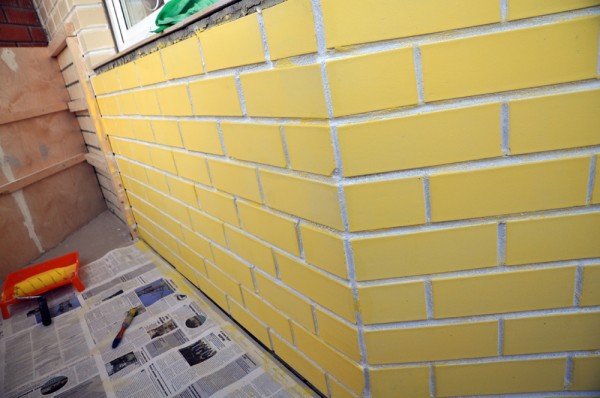
- Painting the bricks themselves in different colors. It turns out interesting, but here it already takes more time and money - after all, you need to purchase paints of different colors.

Such are the solutions. In principle, a lot here depends on your imagination - if you wish, you can make a textured brick surface from a completely smooth plane. To do this, you just need to first paint the entire plane in one color, and then mark the lines with an upholstery cord and apply paint on them with a brush.
That's all!
Let's summarize.
Conclusion
We have figured out in detail how brick walls are painted, how it can be done, and what design options there are. We even considered how to paint a brick wall. We hope that you will be able to apply the acquired knowledge in practice.
Well, if the information provided is not enough for you, then we recommend that you also watch the video in this article.
Most ordinary people perceive brick walls as a structural part of the building, intended for subsequent decorative finishing. However, in last years the position of brickwork in interior design has changed significantly. She increasingly acts as an independent decorative element with which you can give the room a unique style. To do this, you only need to slightly correct its appearance, for which painting a brick wall is used.
Processing a brick wall with paints and varnishes allows you to achieve two goals at once:
- protective function.
- Giving aesthetics.
Protection
Brick has a number of positive qualities that make it the most popular building material. First of all, it is strength and durability - it can be used to build both small private houses and massive multi-storey buildings. Due to its high technical qualities, the service life of brickwork can be more than a dozen, or even a hundred years.
However, this is possible only if the construction technique is observed and the necessary measures are taken to protect the masonry from aggressive external influences.

Among the main disadvantages of this material is the fear of dampness. Brick is very hygroscopic: depending on the variety and grade, it can absorb moisture from 4 to 25% of its own “dry” weight. To combat this shortcoming, the brick wall is painted. The fact is that the burnt clay is very porous, and water easily fills these tiny holes and cracks, penetrating deep into the brick. Inside, it begins its destructive work, gradually softening the clay and leading to a loss of strength.
In winter, moisture turns into ice and literally breaks the brick, splitting it into pieces. If, however, the brick wall is treated with a coloring composition, it will fill all the micropores and cracks in the surface, thereby blocking the access of water into the material.
External aesthetics
Recently, a very popular design decision has become to place a brick wall in the interior of both residential and office buildings. Thanks to its texture, it will allow you to create a unique and inimitable style in an apartment or office.
Depending on the context of placement, the surrounding entourage or decorative finishes, this can be absolutely any stylistic decision. In some cases, interior designers even resort to painting plastered walls to look like brickwork.
With the help of this texture, you can create any style, from ancient classics to ultra-modern hi-tech and urban modern.
Paint selection
Before you paint a brick wall, you should decide on the choice of paint and varnish composition. It all depends on the area of application of the paint - painting a brick wall in the interior will require a completely different coloring composition than painting the facade, so you should carefully figure out how to paint a brick wall on the street, and what - in the room.
Facade paints
The outer walls of buildings are subject to much greater aggressive influences than the inner ones. In this regard, to paintwork materials, intended for external work, more stringent requirements are imposed than for internal painting. First of all, it is:
- Increased resistance to moisture: atmospheric precipitation, melt water, etc.
- Sun resistance. The painted wall should not lose its saturation and brightness of color under the influence of ultraviolet radiation.
- Resistant to temperature fluctuations. Paint and varnish compositions must tolerate both summer heat and winter frosts well.
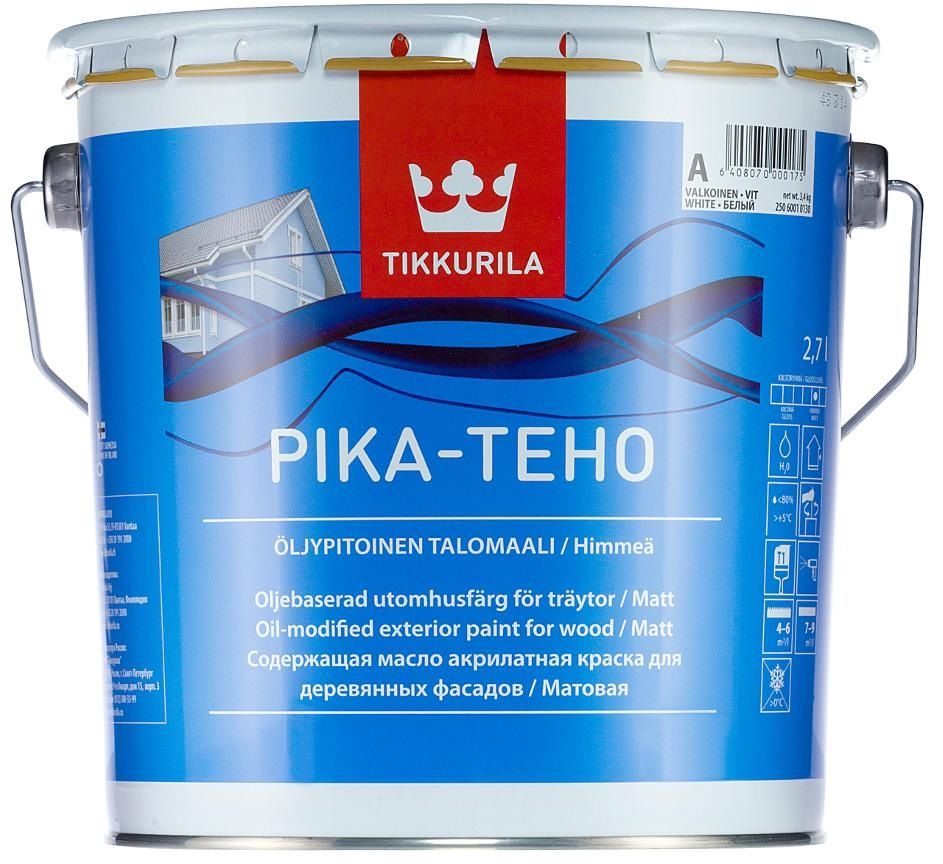
The best options for outdoor decoration are water-soluble compounds: latex, acrylic, silicate or acrylate. Among mineral and organic paints, lime, cement, oil and alkyd nitro enamels can be mentioned.
Which of the following compositions is best suited for exterior walls? Experts advise using latex, acrylic and silicate paints for this. They are highly elastic, which means they will not crack when the bearing base expands / contracts under the influence of cold and heat. Also, these mixtures have good adhesion to the treated surface and do not fade in the sun, which increases their service life. They lie on the base of the wall in a thin, even layer, reducing the consumption of paint and varnish material.
Oil and alkyd compounds have good technical characteristics. However, the thick consistency increases their consumption per sq.m. In terms of operational properties, they are also somewhat inferior to water-soluble compositions: they are less elastic and more susceptible to ultraviolet radiation.

On the surface, they create a dense vapor-tight film. As a result, if the walls are painted with these mixtures, they cease to “breathe”: natural gas exchange is disturbed inside the premises.
Compounds for interior work
The paints used for indoor work are not subject to such stringent requirements as for facade paints. However, before painting, you need to determine the operating conditions: first of all, what is the humidity in the room to be painted.

The most popular paint option recommended for interior brick walls is a water-based emulsion. It is environmentally friendly, durable and affordable. For finishing rooms with high humidity (bathrooms, toilets, saunas and swimming pools), a special, moisture-resistant type of water-based paint should be used.
Another very popular earlier method of painting with mixtures based on organic solvents today is a thing of the past. Despite their resistance to moisture, oil and alkyd enamels dry for a very long time and have a persistent unpleasant odor.
Painting order
In order for the paint to last as long as possible, a number of preparatory work should be done before painting the brickwork.
It is not recommended to paint a brick wall immediately after laying. Before painting, you should let it dry thoroughly, to establish a natural level of humidity. This process can take up to several months. In addition, during this time, the active alkalis contained in the baked clay and masonry mortar are neutralized.
Surface preparation

Preparing a brick wall for painting comes down to cleaning the surface, puttying it and priming it. Before pre-treatment, the wall should be given an aesthetic appearance. To do this, using a chisel and a hammer, or a grinder, the surface is cleaned from various cosmetic defects - masonry mortar sagging, masonry irregularities, etc.
If necessary, the seams are “embroidered” - they are deepened and leveled with putty. Also, with the help of a putty mortar, you can mask the flaws of the brick - chips, shells, cracks. After that, the surface is cleaned from construction dust. This can be done with a powerful vacuum cleaner or a damp sponge.
Primer
After cleaning and puttying the wall, it must be carefully primed. Some inexperienced amateur finishers neglect this work, considering it a waste of time and effort. But, as practice shows, this process allows you to achieve 3 goals at once:
- Strengthening the bearing base.
- Increasing surface adhesion.
- Protection against moisture and fungal attack.
The surface of any building material has one feature: it is less dense and durable than the inner part, therefore, it first shows signs of destruction - cracks, delaminations. The primer for brick walls, thanks to the adhesive composition contained in it, strengthens the surface and prevents its premature destruction.
Also, soil compositions include chemical additives that have antiseptic properties and protect walls from damage by fungus and mold.
As a filler, adhesive primers include crushed quartz sand in their composition. Covering the outside of the brick surface, it increases the adhesion rate between the supporting base and the paint and varnish composition.
All these qualities of soil compositions contribute to an increase in the service life of painted bricks. Before you treat the wall with a primer, it must be cleaned of dust and dirt. The primer composition is applied by means of a roller, brush or spray gun. For better efficiency it is recommended to apply a primer in 2-3 layers.
Painting
The technology of applying the paint and varnish composition depends on its type. Typically, the following tools are used for work:
- Paint brush.
- roller.
- Airbrush.
- Trough-rolling.
When working with paints and varnishes, protective equipment should be used: gloves, goggles and a respirator. The chemical components contained in the paint, if it comes into contact with the mucous membranes and respiratory organs, can cause severe allergic reactions.

Facade walls should be painted during the warm, dry season. The operating temperature range for most paint and varnish mixtures is from +5 to +25 degrees. At this temperature, they dry evenly, forming a strong adhesion to the treated surface. Otherwise, the paint may either freeze or dry too quickly. All this will eventually lead to its rapid delamination from the brickwork.
Often, homeowners who decide to make repairs on their own, the question arises - how to beautifully paint a brick wall? For a more uniform coloring, the composition should be applied in at least 2 layers. Each subsequent layer should be applied only after the previous one has completely dried.
The most evenly coloring composition lies down when applied with a spray gun. This method is great for facades and large interior spaces.
If the work is done in small rooms, then it would be best to use a paint brush or roller. In this case, the paint solution should be applied in this way:
- The first layer is applied in strips directed along the wall. Each strip should overlap the previous one with an overlap of 2-3 cm.
- After the first layer has dried, a second one is applied, but already in a vertical direction.
When working with water-based compositions, you can use a foam or fur roller. When applying oil enamels, it is best to use a brush with natural bristles - a roller, especially foam rubber, leaves visible stripes and specks on the wall after rolling.
To evenly distribute the paint over the surface of the roller, use a rolling trough. Having dipped the roller in the paint, you need to wring it out by rolling it several times over the corrugated surface of the trough.
artificial brick
Sometimes the design of the room provides for the inclusion of fragments of "natural brick", but laying a decorative brick wall is not always possible. In this case, you can make such a wall yourself by painting the plastered and puttied surface. The process of painting brick walls is as follows:
- The wall is prepared for painting: it is cleaned, primed, puttied.
- The entire surface is painted in a color imitating brickwork - brown, red, orange, yellow, white.
- The next step will be to depict the brick texture. This is achieved by depicting decorative masonry joints on the painted surface.

After painting the wall, it is vertically marked. The step of the horizontal stripes should correspond to the height of the brick - that is, 6-8 cm. To enhance the visual effect of the seams, use a paint that contrasts with the general tone of the wall. If it is decided to paint the brick wall in brown or red, it is better to make the seams white or light gray; for a yellow wall, you can use brown seams.
Vertical seams should be staggered for a more natural imitation of masonry.
By following the recommendations above, you can make your own decorative trim brick surfaces. By varying color schemes and skillfully using additional accessories and surroundings, you can create an interior in almost any style.
The video below shows how to properly paint brickwork.




